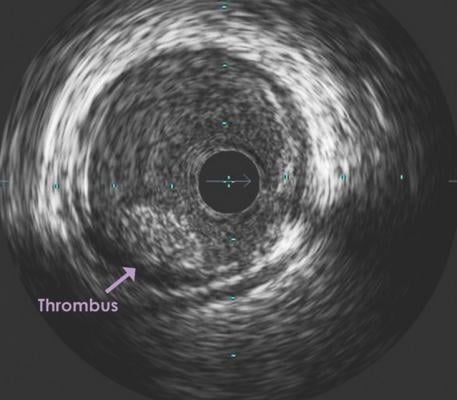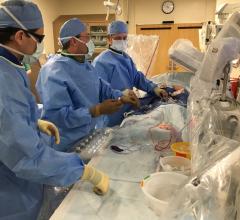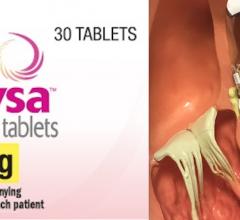
August 31, 2018 — Use of an oral anticoagulant in medically ill patients for 45 days following hospital discharge reduces the rate of non-fatal symptomatic blood clots with no impact on fatal blood clots, according to late breaking results from the MARINER trial. The results were presented in a Hot Line Session at the European Society of Cardiology (ESC) Congress 2018, Sept. 25-28 in Munich, Germany, and published in The New England Journal of Medicine.
Prof. Alex Spyropoulos, study author, of the Donald and Barbara Zucker School of Medicine at Hofstra/Northwell, New York, said, “Anticoagulants help prevent blood clots in medically ill patients while they are under our supervision at the hospital. However, the risk of blood clots extends well beyond this period. Our results suggest we may be able to offer further protection to patients at risk from non-fatal blood clots, with no increase in major bleeding, by prescribing an oral anticoagulant for use after discharge. This study has potential to reduce the public healthcare burden of non-fatal blood clots in a large proportion of medically ill patients.”
Each year, around 20 million acutely ill medical patients are hospitalized in the U.S. and EU with conditions such as heart attack, pneumonia, flu, bronchitis, asthma or broken bones. A significant proportion of these patients are at risk of venous thromboembolism (VTE), which includes deep vein thrombosis (DVT) and pulmonary embolism, while in hospital and up to six weeks afterwards. Around 70 percent of hospital-acquired fatal pulmonary embolism occurs in medically ill patients.
Anticoagulants delivered by intravenous drip or injection are recommended to prevent blood clots (called thromboprophylaxis) in medically ill patients while in hospital, but guidelines do not recommend any use of anticoagulants post-discharge. However, after leaving the hospital the rate of symptomatic VTE more than doubles over the first 21 days and is associated with a five-fold increased risk of fatal pulmonary embolism within 30 days post-discharge.
The MARINER trial investigated whether continuing thromboprophylaxis with an oral anticoagulant after discharge could reduce the risk of symptomatic VTE and VTE-related death in medically ill patients at risk for VTE. The trial enrolled 12,024 patients from 671 centers in 36 countries. Patients were 40 years of age or older, had been hospitalized for an acute medical illness, and had other risk factors for VTE as defined by a VTE risk score. The risk score included immobilization for one day or longer, being in intensive care, age over 60 years, limb paralysis, previous VTE, thrombophilia or a D-dimer level more than two times the upper limit of normal.
Patients were randomly allocated to a 45-day course of either once daily oral rivaroxaban 10 mg (7.5 mg in patients with reduced kidney function) or placebo at the time of hospital discharge. The primary efficacy outcome was symptomatic VTE and VTE-related death. The principal safety outcome was major bleeding.
The final analysis included 12,019 patients, of whom 11,962 (99.5 percent) had taken at least one dose of study drug. The average age was 69.7 years and 48 percent were female. Four in 10 patients had been admitted to hospital for heart failure, 27 percent for respiratory insufficiency, 17 percent for infectious disease, 14 percent for ischemic stroke and 2 percent for inflammatory disease.
During the 45-days post-discharge, 50 (0.83 percent) patients taking rivaroxaban had symptomatic VTE or died from VTE-related causes compared to 66 (1.1 percent) taking placebo (p=0.136). When examining symptomatic VTE only, which included lower extremity DVT and non-fatal pulmonary embolism, there were fewer events with rivaroxaban (0.18 percent) compared to placebo (0.42 percent; hazard ratio [HR] 0.44, 95 percent confidence interval [CI] 0.22–0.89, p=0.023).
The researchers also examined an exploratory secondary composite endpoint of symptomatic VTE and all-cause mortality. They found that 1.3 percent of patients taking rivaroxaban experienced an event compared to 1.78 percent of patients in the placebo group (HR 0.73, 95 percent CI 0.54–0.97, p=0.033).
Major bleeding occurred in 17 (0.28 percent) patients in the rivaroxaban group compared to nine (0.15 percent) taking placebo (p=0.124), with very few critical and fatal bleeds and no significant difference between groups.
For more information: www.nejm.org
Reference


 August 28, 2023
August 28, 2023 








